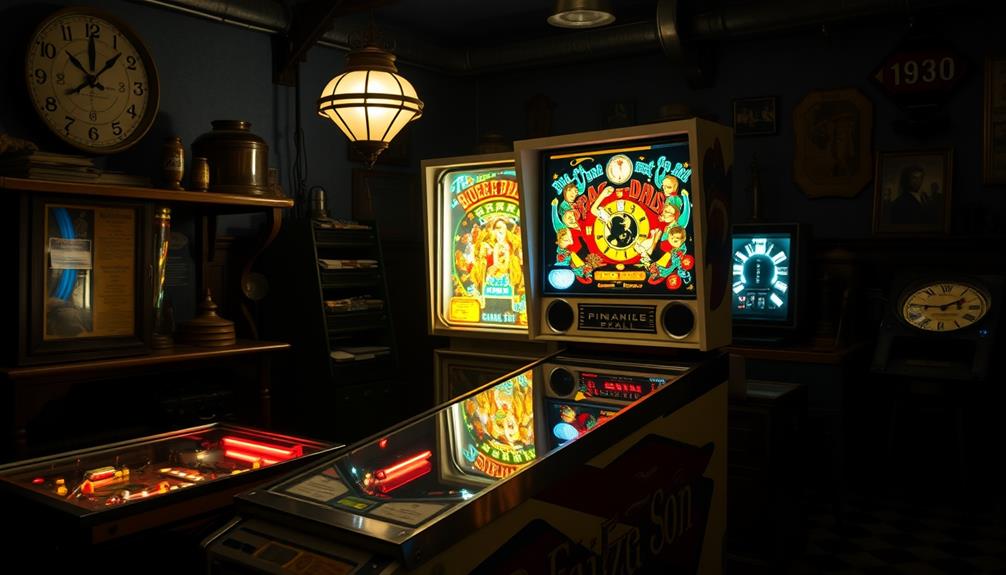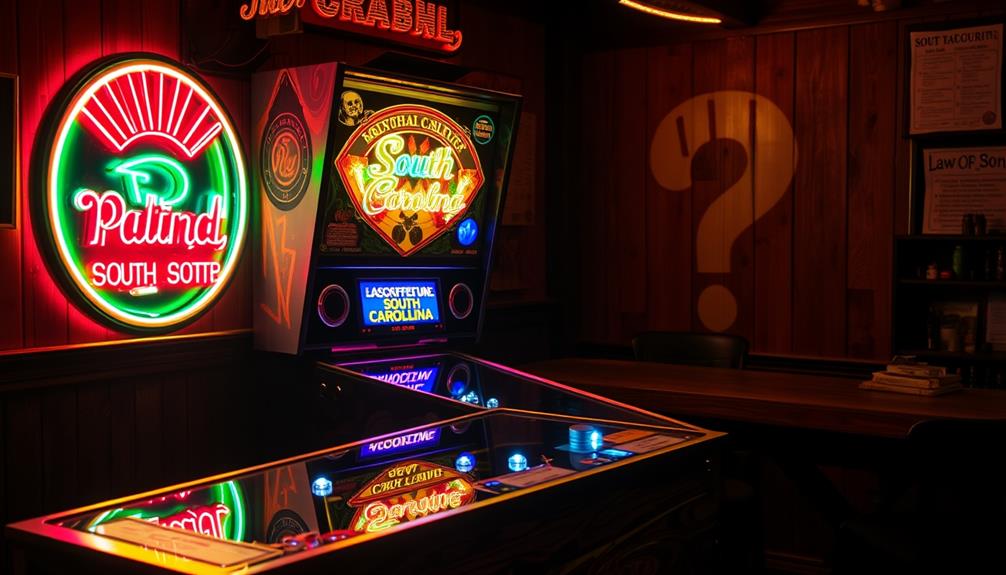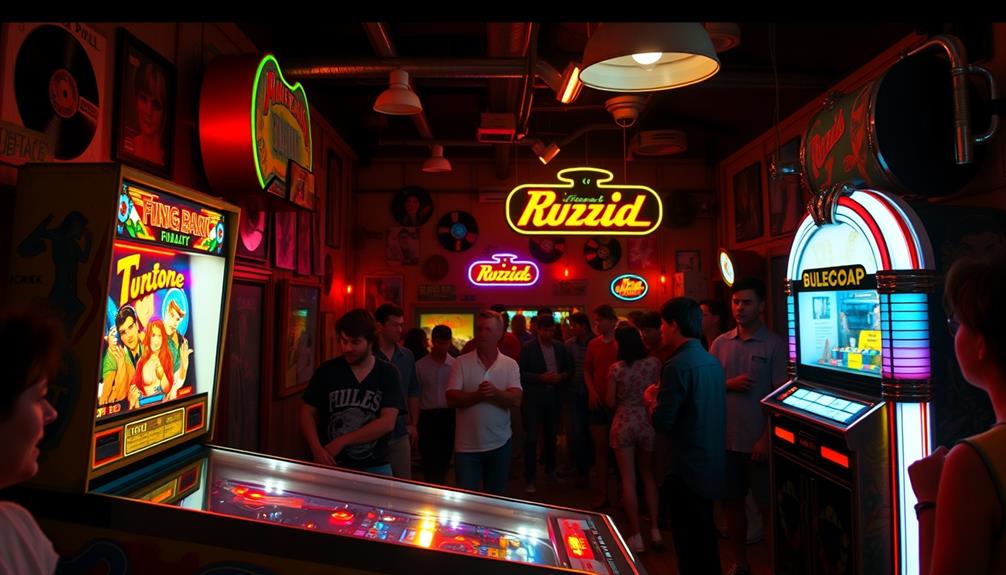Maintaining a pinball machine is not too difficult, but it does require attention and some basic skills. It is important to establish a consistent cleaning schedule and regularly inspect the machine for any worn or damaged parts. Being familiar with the machine’s manual is crucial for efficient maintenance and troubleshooting. While you may encounter challenges such as electrical issues or component wear, these can be manageable with the right tools and resources. Connecting with local collectors and online communities can also provide guidance for more complex repairs. By sticking with it, you will discover more tips and tricks to keep your machine in great shape. Overall, maintaining pinball machines can be a fulfilling hobby, and with dedication, you can ensure your machine runs smoothly for years to come. It is essential to stay proactive and address any issues promptly to prevent further damage. Engaging with the pinball community will allow you to learn from other enthusiasts and enhance your maintenance skills. In conclusion, consistent care and attention are crucial in keeping pinball machines in top condition.
Key Takeaways
- Regular maintenance is essential to prevent wear and ensure optimal gameplay, making it manageable for dedicated owners.
- Familiarity with machine specifications and terminology simplifies troubleshooting and repair tasks.
- Routine inspections and cleaning can catch issues early, reducing the difficulty of maintenance.
- Common repairs, like replacing rubber bands and bulbs, are straightforward with basic tools and practice.
- Access to manuals and community support can significantly ease the maintenance process for pinball machines.
Buying Considerations for Pinball Machines
When you're considering buying a pinball machine, it's essential to do your homework first. Familiarize yourself with the machine's specifications and relevant terminology, as this knowledge will make maintaining a pinball easier down the road.
Understanding the key traits of successful maintenance, such as attention to detail, will help you spot potential issues more effectively. Don't just buy one blindly; inspect and play the machine to spot potential issues like battery leakage or burnt components.
Before your inspection, download the machine's manual from IPDB.org. This resource is invaluable for understanding maintenance requirements and troubleshooting common problems.
You'll want to evaluate the machine's condition carefully—Home Use Only (HUO) machines typically show less wear and tear, making maintenance simpler.
Connecting with local collectors and pinball leagues can also provide insights into the best machines to buy and help you learn effective maintenance practices specific to different models.
Remember, part of maintaining a pinball is cleaning the playfield regularly. When you clean your pinball machine, it not only enhances its performance but also prolongs its life.
Routine Maintenance Essentials

To keep your pinball machine in top shape, establish a regular cleaning schedule that suits your usage.
Incorporating a budget plan for maintenance expenses can also enhance your ability to address any necessary repairs.
You'll also want to inspect parts frequently and document all maintenance activities to catch any issues early.
Staying on top of these essentials guarantees peak gameplay and prolongs your machine's life.
Regular Cleaning Schedule
A regular cleaning schedule is crucial for keeping your pinball machine in prime condition. Ideally, you should perform light cleanings every 2 to 4 weeks and set aside time for a deep cleaning annually. This routine helps maintain the playfield and all components of the machine.
Incorporating multi-functional tools from your Doomsday Robots gear can also assist in your maintenance efforts. Use a soft, lint-free cloth or microfiber towel to dust the playfield, steering clear of harsh chemicals that could damage the finish.
As part of your cleaning regimen, take the time to inspect and clean the flipper mechanisms and rubber rings. Replacing worn parts will guarantee peak gameplay performance, allowing you to enjoy every game without interruption.
Additionally, schedule quarterly maintenance checks to tighten any loose screws, bolts, and nuts. This simple task can prevent gameplay issues and potential damage down the line.
It's also wise to document your cleaning and maintenance activities in a log. This will help you track the condition of the machine and identify any recurring issues that may need attention.
Parts Inspection Frequency
Keeping your pinball machine in top shape involves not just regular cleaning but also frequent inspections of its parts. Establishing a parts inspection frequency is essential to maintaining peak gameplay. You'll want to conduct regular inspections every few weeks to spot any loose screws, damaged parts, or signs of wear before they escalate into bigger issues.
Here's a simple inspection schedule to follow:
| Inspection Item | Frequency | Key Points |
|---|---|---|
| Mechanical Parts | Every 2 Weeks | Check for damage and tightness |
| Playfield | Monthly | Look for chipped paint and cracks |
| Rubber Rings | Every 1-2 Weeks | Replace when worn or damaged |
Make it a habit to inspect the playfield for any chipped paint or cracked plastics, as these can affect both aesthetics and functionality. Regularly check the flipper assemblies and mechanisms to guarantee responsiveness. By staying on top of these inspections, you can prevent costly repairs and keep your pinball machine running smoothly for years to come.
Documenting Maintenance Activities
Documenting maintenance activities is vital for guaranteeing your pinball machine remains in ideal condition. By keeping a digital log of repairs, part replacements, and cleaning schedules, you can track the machine's condition and history. This practice makes it easier to identify recurring issues and address them proactively.
Additionally, just as security systems deter potential threats, maintaining a well-documented service history can help prevent future maintenance headaches the value of home security systems.
Start by documenting playfield setup with photos before disassembly. This guarantees you can correctly reassemble all components, minimizing errors during maintenance. Be diligent about noting the replacement of worn parts, such as bulbs and rubber bands, to prevent gameplay disruptions.
Maintaining a servicing notebook is also important. Use it to track cleaning schedules and any modifications made to the machine. Recording the dates and details of both routine and deep cleaning helps establish a consistent maintenance routine, enhancing your machine's longevity and functionality.
Common Repair Challenges

When you own a pinball machine, you'll quickly notice that frequent component wear can be a hassle.
Avoiding investment pitfalls is important, just as it's in managing your finances.
Troubleshooting electrical issues, like burnt connectors or faulty switches, often requires some technical know-how and access to replacement parts.
Staying on top of these challenges is essential to keeping your machine in top shape and ensuring hours of fun.
Frequent Component Wear
Pinball machines are a blast to play, but they don't come without their challenges, especially when it comes to frequent component wear. As an owner, you'll quickly realize that certain parts require regular maintenance to keep gameplay performance at its best. One of the most important pinball machine maintenance tips is to regularly clean and wax the playfield to prevent ball drag and wear. Additionally, keeping a close eye on the condition of the flipper buttons and ensuring they are in good working order can help prolong the life of these essential components. By staying on top of maintenance and addressing issues promptly, you can ensure that your pinball machine continues to provide endless hours of enjoyment for years to come.
Just like essential oils for toothache relief can help alleviate discomfort, regular upkeep can enhance your gaming experience. Here are some common components you'll need to pay attention to:
- Rubber Bands: These can degrade over time, affecting ball movement and overall playability.
- Flipper Mechanisms: Worn flipper coils often need replacement after 500 to 1000 games, impacting how well you can control the ball.
- Bulbs and Switches: Burnt-out bulbs and faulty switches are frequent repair challenges that can interrupt your game sessions.
- Mechanical Parts: Solenoids and motors may fail due to wear and tear, requiring basic repair skills or professional help.
Electrical Issues Troubleshooting
Frequent component wear is just one aspect of maintaining your pinball machine; electrical issues can also pose significant challenges. You might notice symptoms like malfunctioning lights, unresponsive switches, or erratic behavior from mechanical components, all of which signal potential electrical issues.
To troubleshoot these problems, start with a visual inspection to identify burnt connectors, which often require soldering skills for repair. Regular maintenance, similar to appliance upkeep, can prevent some of these electrical problems from arising.
Using a multimeter can help you diagnose issues further by isolating faults in the circuitry. Pay attention to battery leakage, as it can corrode circuit boards and cause failures over time. Regular checks and timely battery replacements are vital to prevent extensive damage.
Understanding your machine's schematics is essential for effective troubleshooting, as it reveals wiring paths and component relationships. While many electrical repairs, like replacing burnt-out coils or switches, can be manageable with basic tools and some practice, don't hesitate to seek professional help for more complex issues.
Replacement Part Availability
Over time, finding replacement parts for your pinball machine can become a challenge, especially if you own an older or rare model. Many parts may no longer be in production or available from mainstream suppliers, leading to frustration during maintenance.
Proper care and maintenance of your machine can be just as essential as finding the right parts, similar to the importance of piercing care and hygiene for body modifications.
Here are some common challenges you might face:
- Limited Availability: Older machines might've scarce replacement parts, making repairs tough.
- Compatibility Issues: It's vital to verify that replacement parts match your specific machine model, or you could face further complications.
- Cost Variability: Rarity and condition greatly affect the price of replacement parts, with specialty components often costing much more.
- Sourcing Hard-to-Find Parts: Online forums and community groups can be invaluable for leads on rare components, as enthusiasts may sell or trade spare parts.
To alleviate some of these challenges, focus on regular maintenance and proactive replacement of wear components.
Key Parts to Inspect

When maintaining a pinball machine, inspecting key parts is essential to confirm ideal gameplay. Start with the playfield; regularly check for wear, chipped paint, or cracked plastics. These issues can greatly affect gameplay and should be addressed promptly.
Additionally, consider how regular maintenance can prolong the life of your machine, much like the cleaning and maintenance of airless paint sprayers.
Next, assess the condition of rubber rings. Worn or damaged rings can lead to poor ball interaction, so replace them to maintain peak performance.
Don't overlook the flipper assemblies. Verify that flipper bats are tight and free of wobble, as this assures reliable operation during gameplay.
Next, inspect the electrical components, including connectors and wiring. Look for any signs of damage or corrosion; these can lead to operational failures if not dealt with quickly.
Lastly, examine the mechanical components like pop bumpers and slingshots. Make sure they're functioning correctly to provide an engaging experience.
Importance of Documentation

Maintaining a pinball machine involves more than just inspecting key parts; it also requires careful documentation of your maintenance activities.
Keeping thorough records can greatly enhance your efficiency and understanding of your machine, much like how appliance maintenance plans help extend the lifespan of household appliances.
Here are four key reasons why documentation is essential:
- Track Changes and Repairs: A digital log of maintenance activities helps you monitor the overall condition of your pinball machine and identify recurring issues.
- Playfield Setup Reference: Documenting the playfield setup with photos before disassembly ensures an accurate reassembly, reducing the risk of errors during maintenance.
- Inventory Management: Keeping records of replaced parts, like bulbs and rubber rings, allows for timely replacements and efficient inventory management.
- Manufacturer Specifications: Utilizing the pinball manual as a reference guarantees that your maintenance tasks align with the manufacturer's guidelines, preventing potential damage.
Regularly updating your maintenance documentation fosters better troubleshooting in the future, as it provides historical context for your pinball machine's performance and any issues that may arise.
With proper documentation, you'll not only maintain your machine more effectively but also enjoy a smoother playing experience.
Tools Required for Maintenance

Proper pinball machine maintenance hinges on having the right tools at your disposal. You'll need some basic tools like screwdrivers, pliers, and wrenches, which you probably already have at home. These will help you tackle most routine repairs and adjustments.
Additionally, understanding the balance between creative problem-solving and technical skills can enhance your maintenance efforts, much like applying strategies for nurturing creativity in design thinking.
A soldering iron and 60/40 solder are vital for fixing electrical connections and components that may have come loose or burned out. When diagnosing electrical issues, a multimeter becomes invaluable. It helps you identify faulty components or connections, ensuring your machine runs smoothly.
Another handy tool is a specialized switch change tool, which simplifies the process of replacing faulty switches. This makes maintaining your machine easier and less time-consuming.
Additionally, it's important to regularly inspect and replace worn tools. Using high-quality tools prevents damage during repairs and helps maintain the integrity of your machine.
With these tools in hand, you'll find that maintaining your pinball machine isn't only manageable but also quite rewarding. Being proactive with maintenance can extend the life of your machine and enhance your playing experience.
Community Resources and Support

Engaging with community resources can greatly enhance your pinball machine maintenance experience. By connecting with fellow enthusiasts, you'll find a wealth of support and shared knowledge that can help you tackle any maintenance issues you encounter.
Here are some valuable resources you should consider:
- Online Forums: Platforms like Pinside and Facebook groups offer troubleshooting tips and shared experiences from a broad community of pinball lovers.
- Local Pinball Leagues: Joining a league can connect you with other collectors, allowing you to share knowledge and gain hands-on experience at events.
- Repair Technicians: Networking with local repair technicians can provide expert guidance for complex maintenance issues, ensuring your machines stay in top shape.
- Documentation Websites: Resources like PinWiki and PinRepair have extensive guides for both new and experienced owners, making them invaluable for DIY repairs.
Frequently Asked Questions
Do Pinball Machines Need Maintenance?
Yes, pinball machines need maintenance. You'll want to clean the playfield, inspect components, and replace worn parts regularly. Staying on top of these tasks guarantees peak performance and extends your machine's lifespan. Don't neglect it!
What Is the Easiest Pinball Machine to Maintain?
If you're looking for the easiest pinball machine to maintain, consider an Electromechanical model. They've simpler mechanics and fewer electronic parts. Machines like Gottlieb's "Lucky Seven" are great options for straightforward upkeep and replacement parts availability.
How Often Do You Clean a Pinball Machine?
You should clean your pinball machine every 2 to 90 days based on how often you use it. An annual deep clean is also essential to keep everything running smoothly and extend its lifespan.
Why Were Pinball Machines Banned in USA?
Pinball machines faced prohibition primarily due to public perception. Politicians believed these playful pieces promoted perilous practices like gambling. This misguided notion sparked widespread bans, stifling a beloved pastime until skill was recognized in the mid-1970s.
Conclusion
In the delightful dance of pinball maintenance, you'll discover that dedication and diligence deliver delightful results. While pinball machines can present a few pesky problems, regular upkeep and a keen eye can keep them in top shape. By staying savvy about their parts and seeking support from the spirited community, you'll soon find that the joy of ownership outweighs any minor maintenance mishaps. So, roll up your sleeves and revel in the rewarding world of pinball!









